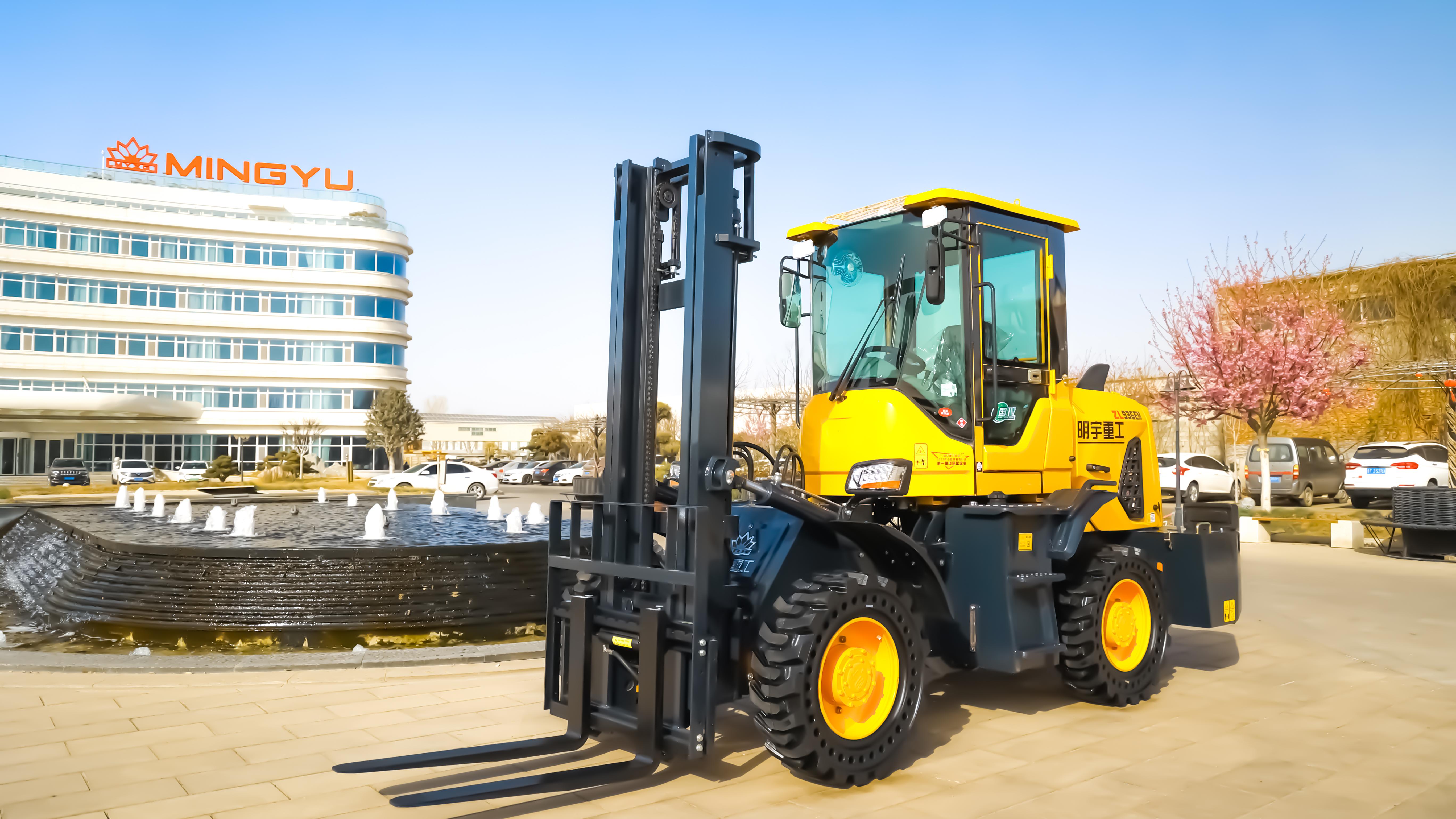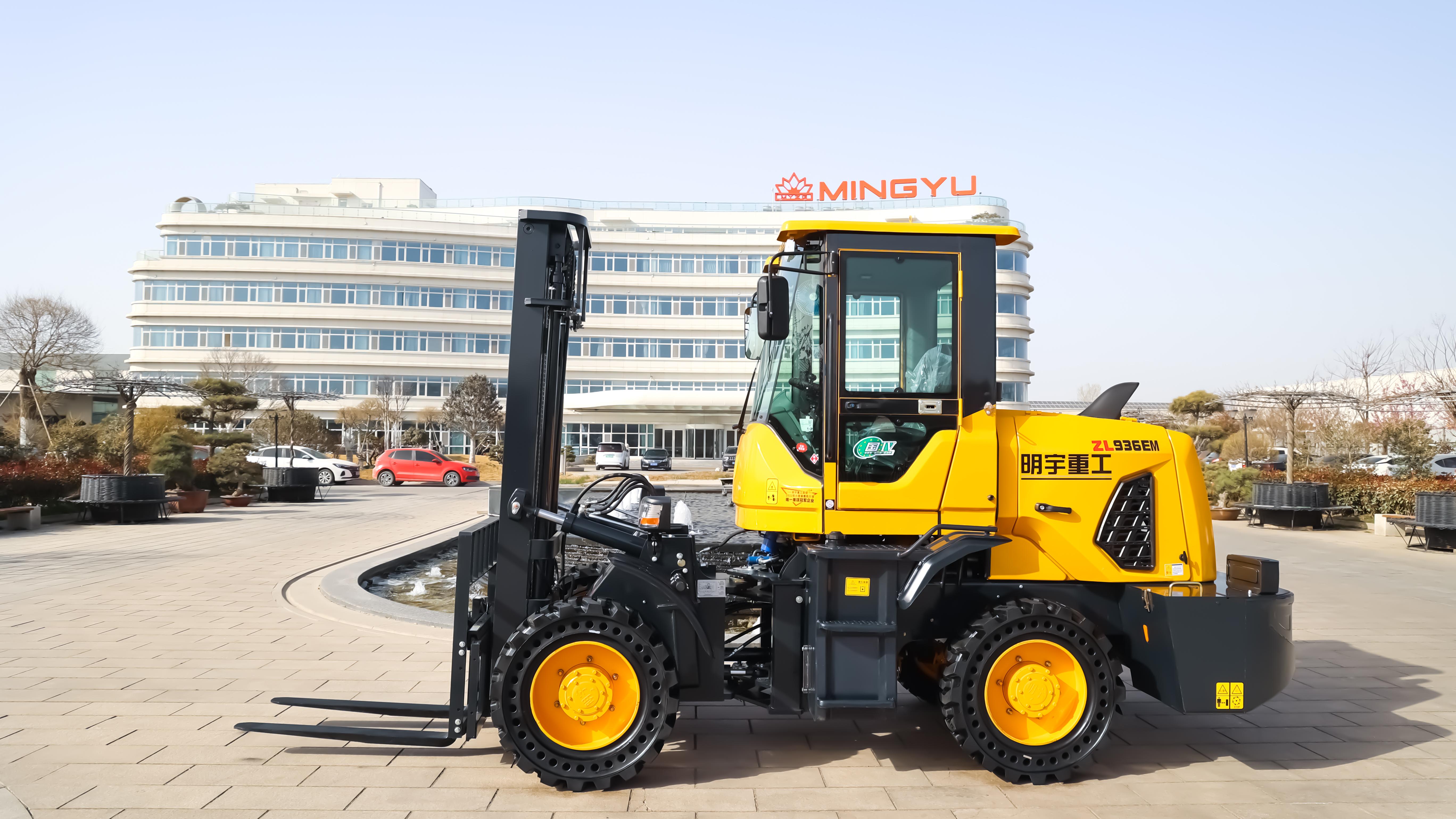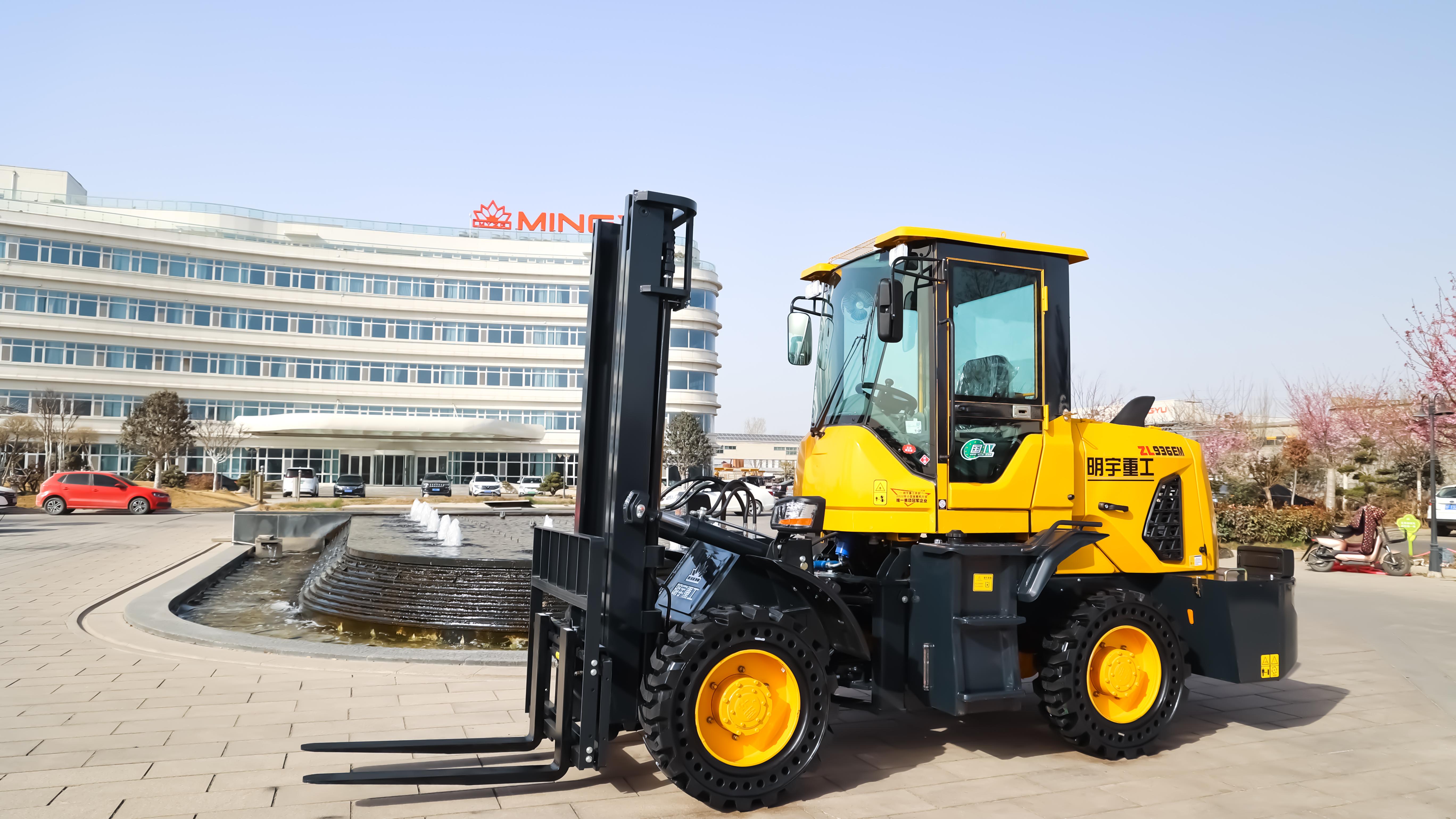What’s the Difference Between an Off-Road Forklift and a Rough Terrain Forklift?
1. Introduction
Forklifts are indispensable tools in many industries, especially when it comes to moving heavy loads in outdoor and rugged environments. However, terms like “off-road forklift” and “rough terrain forklift” are often used interchangeably, causing confusion. Although they may seem similar, these machines have distinct features that make them suitable for different tasks and terrains. This article will clarify their differences to help you make an informed choice.
2. What Is an Off-Road Forklift?
An off-road forklift is a type of forklift designed to operate on unpaved surfaces such as dirt roads, gravel, grass, or moderately uneven terrain. These forklifts are more versatile than standard warehouse forklifts and can handle light to moderate outdoor conditions.
Common applications:
Agriculture and farming
Vineyards and orchards
Outdoor storage yards
Landscaping and gardening
3. What Is a Rough Terrain Forklift?
A rough terrain forklift is a specialized off-road forklift built to handle the most challenging outdoor conditions. It typically features a reinforced chassis, large pneumatic tires with deep treads, high ground clearance, and powerful engines to manage heavy loads on extremely uneven or muddy ground.
Common applications:
Construction sites
Oil and gas fields
Mining operations
Military logistics
4. Design and Structural Differences
Off-road forklifts and rough terrain forklifts differ significantly in build:
Frame strength: Rough terrain forklifts have a sturdier frame for durability in harsh environments.
Tires: Off-road forklifts usually have pneumatic tires suitable for softer grounds, while rough terrain forklifts feature heavy-duty, deep tread tires designed for maximum traction.
Ground clearance: Rough terrain models offer higher ground clearance to avoid obstacles.
Drive system: Rough terrain forklifts are often 4-wheel drive (4WD) for better traction, while off-road forklifts may have 2WD or 4WD options.
5. Load Capacity and Lifting Height
Both forklifts come in various capacities, but rough terrain forklifts generally have higher lifting capacities and taller lift heights.
Off-road forklift: Typically ranges from 3,000 to 8,000 lbs capacity.
Rough terrain forklift: Can lift from 6,000 lbs up to 15,000 lbs or more.
The higher center of gravity on rough terrain forklifts requires advanced stability features.
6. Mobility and Terrain Adaptability
Off-road forklifts are ideal for moderately uneven terrain such as gravel or dirt roads, but they may struggle on very rugged or muddy surfaces. Rough terrain forklifts excel in highly uneven, muddy, or rocky terrain due to their advanced suspension, traction control, and tire design.
Turning radius: Off-road forklifts typically have a tighter turning radius suitable for narrower spaces.
Slope handling: Rough terrain forklifts are built to handle steeper slopes safely.
7. Engine Power and Performance
Engine specifications differ depending on model and use:
Fuel types: Both types use diesel, gas, or propane, but rough terrain forklifts often require more powerful diesel engines.
Horsepower: Rough terrain forklifts generally have higher horsepower and torque to manage challenging loads and inclines.

8. Safety Features and Operator Comfort
Both types come with operator cabins designed to protect and provide comfort:
Cabin types: Enclosed cabins with climate control are common on rough terrain forklifts due to harsher environments. Off-road forklifts may have open or semi-enclosed cabs.
Safety systems: Roll-over protection systems (ROPS), seat belts, and load stabilizers are standard.
9. Use Case Scenarios
Off-Road Forklift: Best for light to moderate outdoor jobs where terrain is uneven but not extreme. Examples include farms, nurseries, and outdoor storage yards.
Rough Terrain Forklift: Suited for heavy-duty outdoor work in construction, mining, or any environment with extreme terrain and heavy materials.
10. Maintenance and Durability
Rough terrain forklifts often require more intensive maintenance due to their heavy-duty use. Regular inspections of tires, suspension, hydraulic systems, and engines are essential. Off-road forklifts have lower maintenance costs but still need regular care to ensure safety.
11. Cost Considerations
Purchase price: Rough terrain forklifts are generally more expensive due to their rugged build.
Operating costs: Fuel and maintenance tend to be higher for rough terrain forklifts.
Resale value: Both hold good resale value when properly maintained.
12. Conclusion
While off-road and rough terrain forklifts serve similar purposes, their design, capabilities, and suitable environments differ. Off-road forklifts are versatile for moderate conditions, while rough terrain forklifts are engineered for the toughest jobs. Consider your terrain, load requirements, and budget carefully to select the right forklift.
Post time:Jun.27.2025


